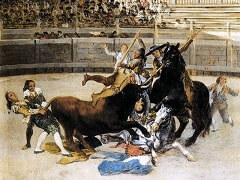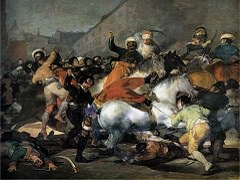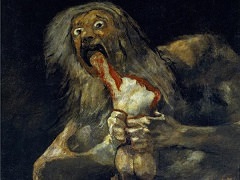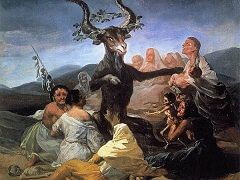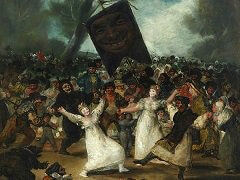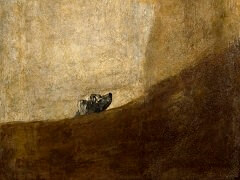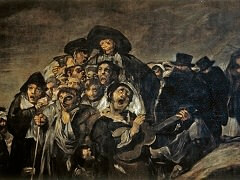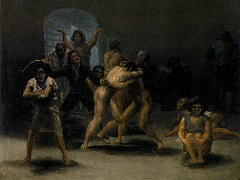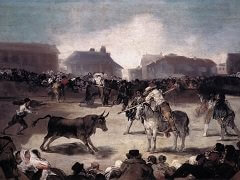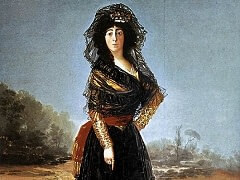Antonia Zarate, 1805-1806 by Francisco Goya

Francisco Goya almost certainly did this painting from life, with Antonia posing, perhaps in his study: we agree with Xavier de Salas that the couch upholstered in yellow damask in the style of Louis XVI may be the one cited in the 1812 inventory of goods divided between Goya and his son, Javier, which comprised "eight armless chairs in yellow damask ... [and]... a matching divan." This divan becomes a shining stage for the actress richly attired in black intensifying her beauty.
Born in Barcelona in 1775, Antonia Zarate was a renowned actress who performed with her sister Maria in Madrid. The sisters belonged to a family of actors and artists, as did the sitter's husband, Bernardo Gil, a singer and comic actor in the Teatro del Principe. Their son, Antonio Gil y Zarate, became a celebrated poet and playwright. Valentin Carderera notes that Antonio owned two portraits of his mother by Goya: "Goya painted Dona Antonia Zarate ... twice, once in 1810 and again in 1811, both are in the possession of her son."1 It is unclear if one of the portraits cited by Carderera is the one exhibited here. Nor is there agreement as to which of the two extant works was painted first. But Antonia's low-cut garment, with raised lace at the borders, her hairstyle and the fine mantilla falling to her shoulders with marked naturalness, and her gloved arms match the style of the first decade of the nineteenth century. Her attire and the placement against a neutral background coincide with the compositional system employed in Young Lady Wearing a Mantilla and Basquina and Young Woman with a Fan, both dated between 1805 and 1806, the date accepted by Harris and Glendinning for the Dublin portrait. Antonia is closer to these astonishingly elegant middle-class women than to the famed actress Maria del Rosario Fernandez Ramos, called "La Tirana" (the Tyrant), whom Goya had painted toward the end of the eighteenth century. Portraits of La Tirana, an emancipated woman who could fend for herself, display an impressive physicality, forceful and defiant. Zarate, on the other hand, is slim and delicate. A kind of melancholy envelops her, resulting from her distant and internalized gaze.



